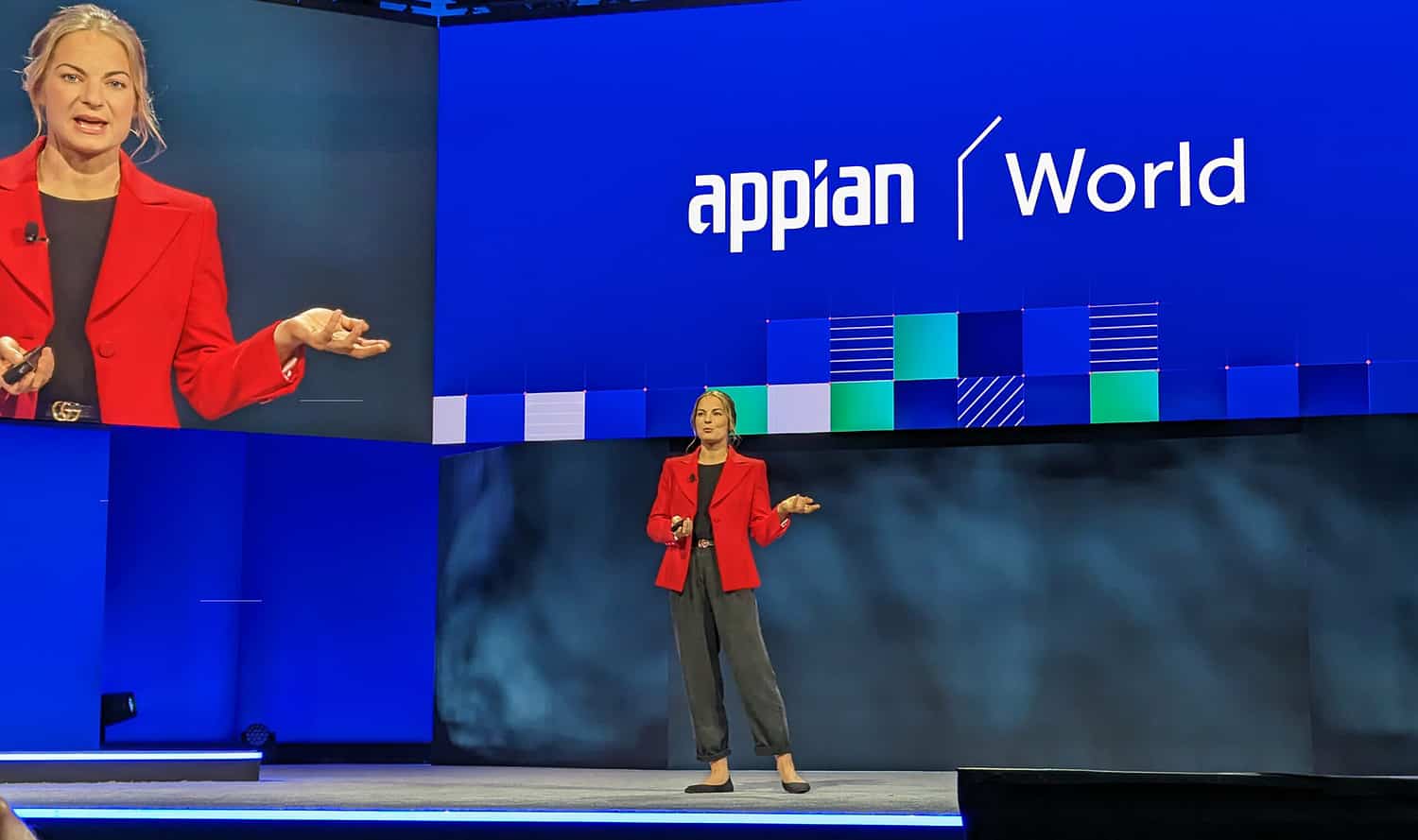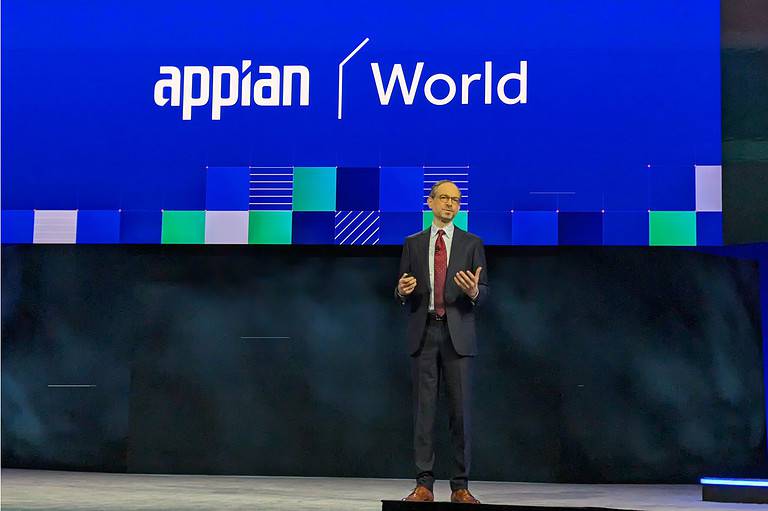Process mining can be of great benefit to organizations. However, they need to know how to get to those beneifts. That’s where companies need help. Appian wants to provide that help through its Insight to Action program. It also revealed what the future of process mining looks like according to Appian.
Gaining knowledge about how processes within an organization run can provide a lot of insights into how to improve them. However, it is also by nature quite complex. Process mining analyzes event data, which is something that most systems do not share in a structured way. This “uploading” of data toward a process mining solution is still the main problem for organizations that want to get started with it. In other words, this is about data prep and partly about data quality. If that’s not properly taken care of, there’s not a huge amount of value in the results that come out of it.
However, things are changing in this regard, we hear at Appian World 2023 from – among others – Karina Buschsieweke and Appian CEO Matt Calkins. Appian bought Lana Labs several years ago to add it to its platform, linking it to things like BPM, low-code development, RPA and the other parts of the platform.
More guidance is needed
The issues around process mining cited above have pretty big implications, we hear from Buschsieweke, formerly the CEO of Lana Labs who came to Appian with the acquisition. “Not a lot of companies get past a PoC,” she states. The reasons are mainly that process mining is still a complex experience for end users. Among other things, this can cause organizations to lack confidence that they can handle it.

So the problem is not so much in the quality of the output, if we understand it correctly. It’s much more in actually handling the technology in practice. Hence, today at Appian World, Appian announced a program to address this with customers. Insight to Action aims to ensure that customers can be confident at every step that they are doing the right thing and moving in the right direction.
Insight to Action program
The goal of the new Insight to Action program is to help organizations realize the value of process mining as quickly as possible. As the name suggests, this is not only about the insights that emerge from process mining, but also what organizations can and sometimes should do with those insights. Below we have listed the components of the program.
- Guidance on choosing processes to mine;
- Transforming the data extracted from the processes for the use case for which process mining is being used;
- Process mining analysis;
- Presenting and visualizing analysis of performance;
- Recommendations for optimizing processes;
- Preparation of a so-called Success Plan. The purpose of this document that Appian prepares with the client is to outline a project plan, with continuous improvement as the main goal;
- Establishing Success Checkpoints. These are predetermined recurring sessions to continuously evaluate the plan;
- Finally, Appian and the client together determine if the improvement is actually visible and measurable.
With this program, Appian removes a lot of complexity around process mining for organizations. Of course, it is still relatively unclear in advance what you will gain as an organization. This undoubtedly plays a role in the decision whether or not to do process mining. However, for customers who choose to do a PoC, it becomes possible to move on relatively quickly and actually start using it in production.
The future of process mining
With the Insight to Action program, however, Appian is not solving the fundamental complexity of process mining. It is more of a workaround to avoid it, but of course the complexity is still there. To address that, the offering needs a much more fundamental overhaul. That’s going to happen, too, we hear from Calkins during his keynote. Hard work is going on behind the scenes on something called Process HQ.
Process HQ is the future for process mining, Calkins indicates. You can also think of it as low-code process mining. In other words, Appian wants to do for process mining what it did for data integration, for example, when it came up with low-code data. Above all, this new way of working should make getting started with process mining much easier. Calkins talks about the “hard struggles at the beginning of process mining initiatives” becoming a thing of the past.
To consign the hard struggles Calkins talks about to the history books, Appian is going straight to the data fabric within the Process HQ vision. This provides real-time insights into how efficient your processes are. That means you don’t have to wait until the end of a quarter to adjust things to processes. You can do it right away. That’s where Appian is going to make recommendations. Appian will release this “next generation of process mining” in beta in the next quarter, Calkins indicates.
All in all, there is a lot of movement in the field of process mining. For now, the Insight to Action program is there to get started in concrete terms right now. In the future, this program may be able to go back into the drawer if Process HQ does what it promises and makes process mining a whole lot easier again.
